#Future of Healthcare Technology
Text
Key Developments And Emerging Technologies In Medical Devices - A Decade of Innovation!
In the past decades, the field of medical devices has seen amazing growth and innovation.
EuroNoxx Medical Group is a leading provider to the NHS and private hospitals. It is at the forefront of this revolution. It makes sure healthcare facilities have the newest technologies.
They use these to give top care to patients. Several key developments have changed the global landscape. They have transformed healthcare management and technology use. These include breakthrough technologies and revolutionary advancements.
Let EuroNoxx Medical dig deeper into top emerging technologies that have made a significant impact on medical devices in the last decade, revolutionising patient care and improving treatment outcomes.
mRNA Technology:
mRNA (messenger RNA) technology has changed vaccine development. It has also changed treatment for various diseases. This technology was showcased a lot during the COVID-19 pandemic.
It lets the body make specific proteins. These proteins trigger the immune response we want.
The success of mRNA vaccines against COVID-19 has opened doors. They lead to better treatments for cancer, heart disease, and genetic disorders.
Virtual Reality (VR):
Virtual Reality technology has entered the medical device field. It offers immersive experiences and has many uses. Surgeons use VR to simulate complex procedures.
This allows for detailed practice and honing of skills. It avoids risking patient safety. VR therapy is also a promising tool for pain management. It can provide distraction during procedures and aid in exercises for rehabilitation.
Neurotechnology:
Neurotechnology has seen big advances. This is especially true for brain-computer interfaces (BCIs) and neurofeedback. BCIs enable direct brain-to-device communication. They let paralyzed people control prosthetic limbs and communicate through thought commands.
Neurofeedback devices are for brain training. They help people enhance their brain patterns. This improves mental health and thinking.
Artificial Intelligence (AI):
Medical devices now integrate Artificial Intelligence. It offers capabilities like data analysis, pattern recognition, and predictive modelling. AI algorithms provide valuable insights for diagnosis, treatment planning, and personalised medicine.
Machine Learning algorithms help identify diseases in medical images. They improve accuracy and efficiency. AI-driven healthcare systems also facilitate real-time monitoring. They also enable early detection of potential health risks.
3D Printing:
3D printing has revolutionised the making of medical devices. They range from prosthetic limbs to custom implants. This technology allows for detailed, patient-specific designs. They ensure a perfect fit and better function.
Also, 3D-printed surgical models help with pre-surgical planning and education. They let surgeons understand complex procedures better and improve patient outcomes.
Precision Medicine:
The concept of precision medicine has gained considerable traction in recent years. It involves tailoring medical treatment to an individual's specific traits.
These traits include genetic makeup, lifestyle, and the environment. Genomics, diagnostics, and data analytics have advanced. They allow for personalised treatment and targeted therapies. This improves patient outcomes and minimises adverse effects.
CRISPR:
CRISPR is a gene-editing technology. It has sped up research on genetic disorders and potential treatments. CRISPR modifies or deletes specific genes. It can treat genetic diseases. It can improve current treatments. It can enhance disease prevention.
Health Wearables:
Health wearables are very popular these days. They include smartwatches, fitness trackers, and biosensors. They monitor health and promote wellness.
These devices provide data in real-time. They show heart rate, sleep patterns, and activity. They also show more. Wearables now work with smartphone apps and cloud platforms. This lets users and healthcare providers track and manage health better.
Technology in Mental Health:
Advancements in technology have also extended to the field of mental health. Digital mental health platforms offer innovative solutions for therapy, counselling, and self-care.
These platforms use AI-powered chatbots, virtual therapists, and mobile apps. They provide mental health support, symptom tracking, and personalised interventions. They fill gaps in traditional mental healthcare systems.
The Impact of Technology on Diagnostics:
The first step in effective treatment is accurate diagnosis. Advanced diagnostic instruments, like MRI, CT, and X-ray machines, have improved doctors' ability. They can now diagnose conditions with precision and speed.
These patient monitoring technologies produce detailed images of the body's internal structures.
They let us detect diseases and conditions early stages.
These would be invisible to the naked eye. High-resolution images let medical professionals make better decisions about patient care. This leads to better outcomes and happier patients.
Enhancing Treatment with Surgical Instruments:
The development of tech-driven surgical tools has revolutionised the way surgeries are performed. Hospital equipment such as laparoscopes, robotic surgical systems, and laser tools, has made minimally invasive surgeries accessible.
They reduce the need for open incisions. This minimises the risk of infection and complications. It also substantially reduces recovery times. This allows patients to return to their daily lives more rapidly.
EuroNoxx Medical Group is committed to supplying these new hospital equipment and surgical instruments. This commitment ensures that hospitals can offer the best treatment options. It improves the quality of healthcare.
Patient Recovery and Rehabilitation
Medical equipment's role goes beyond diagnosis and treatment. It is also crucial in patient recovery and rehab. For example, modern physiotherapy equipment helps patients. It helps them regain mobility and strength after surgery or illness.
Similarly, advanced patient monitoring systems allow continuous patient vital illness observation. They ensure that any problems are found promptly. This tech-driven approach to patient care improves patient recovery. It also significantly adds to patient safety and comfort during their hospital stay.
The Future of Healthcare Technology
As technology rapidly advances. This creates an enormous opportunity for more medical and hospital equipment to be incorporated into real-world healthcare systems.
AI and ML improve diagnosis accuracy. Telemedicine expands access to care. EuroNoxx Medical Group is dedicated to adopting these innovations.
We ensure that the NHS and private hospitals are always at the forefront of medical tech.
Conclusion:
The last decade has seen avant-garde in medical devices. They entrust healthcare professionals and help patients. New technologies, such as mRNA and virtual reality, are transforming diagnostic instruments.
They are also changing how we diagnose ecosystems, manage healthcare facilities, and control diseases. This includes intertwined Neurotechnology and AI, 3D printing, precision medicine, CRISPR, telemedicine, health wearables, and mental health tech.
State-of-the-art medical equipment and surgical devices are very important in modern healthcare. Their importance cannot be emphasized enough. They greatly improve diagnosis, treatment, and patient recovery. They enhance healthcare services a lot.
EuroNoxx Medical Group is key in supplying these technologies to the NHS and private hospitals. They ensure top-notch patient care. Advancements in medical technology will improve healthcare accessibility, efficiency, and effectiveness.
#Enhancing Treatment with Surgical Instruments#Patient Recovery and Rehabilitation#Future of Healthcare Technology
1 note
·
View note
Text
2023 As A Witness to the Advancements of Wearable Technology in Healthcare. Check out!

The IoT-driven Wearables is a network of patient-worn high - tech gadgets that are linked to the cloud in the healthcare industry. Individual health data is gathered, analyzed, and transmitted in real time using WIoT. The economy for wearable medical devices was valued at $18.9 billion in 2021, and it is anticipated to grow at a CAGR of 22.2% to $60.6 billion by 2027. The growth of lifestyle-associated disorders such as hypertension and the requirement to enhance patient outcomes are the main factors influencing the future of healthcare technology.
We'll focus on the devices that are readily available right now, despite the fact that technology is always developing and new products are introduced to the market. These include both technology products purchased by the general public and high-quality medical products utilized by healthcare specialists. Wearable Fitness Tracker, Smart Health Watches, Wearable ECG Monitors, Wearable Blood Pressure Monitors, and Biosensors are few instances of such wearable medical technology.
4 Ways Wearables Would Influence The Future of Healthcare Technology In 2023
Wearables to Enhance Continuous Biomarker Monitoring
In this year, non - invasive blood pressure monitoring will be mainly owing to wearable technology in healthcare that uses cutting-edge biomarker sensors.
Glucose Biomarker:By providing precise real-time insights of high blood sugar levels and glycaemic index, it will aid in glucose awareness.
Blood Pressure Biomarker: Keeping track of someone's blood pressure or general cardiovascular health, it will enable better stroke or heart attack risk prediction.
Wearables to Offer Holistic Health Insights
While monitoring individual biomarkers is vital, monitoring many biomarkers will have a greater influence when we can obtain a comprehensive overview of a person's overall health. A wearable gadget, for instance, will be able to track indicators like body hydration, blood pressure, core body temperature, glucose, and lactose patterns to offer crucial hints about a person's health.
Wearables to Drive Proactive Healthcare
The typical tests you receive at your annual checkup offer you only a glimpse of your health at that time. You could learn a lot more if you could proactively identify your health and get warnings whenever something out of the ordinary happens. That would definitely change the game. People will be able to continuously monitor a variety of important biomarkers, determine their current health status in real-time, and take appropriate action.
Wearables to Offer Remote Healthcare
Nowadays, professional-grade biomarker-sensing tools and platforms are used in hospitals and medical centers to keep tabs on patients' health while they are there or in the facility. Patients will have accessibility to the same caliber of data in their residences starting in 2023 and continuing through those years as those platforms and gadgets become portable and less intrusive.
Trending Use-Cases of Wearable technology in Healthcare
Health Condition Monitoring
The personnel of healthcare organizations can employ individual health monitoring devices to track patient health in real time, and they can then use the obtained data to promptly modify the illness management strategy. Patients can monitor their health metrics online and make consultation requests if the solution identifies worrying trends in their vital signs. Examples: wearable spirometer, ECG patches
Patient Therapy Delivery
Medical wearables support patient health maintenance, the treatment of chronic disease symptoms, and instantly collect data on the administration of therapy facilitated by the wearable for a hospital's assessment.
Examples: implanted pacemakers, defibrillators
Patient Rehabilitation
Wearables for patient rehabilitation can facilitate physical therapy delivery and gather information on how well patients are recovering at home or in a hospital. The main benefit is that the wearables give the healthcare staff the ability to carefully record how patients carry out physiotherapy exercises, track the effectiveness of rehabilitation, and keep an eye on patients' vitals as they work out.
Examples: smart gloves, EMG sensors
Early Disease Diagnostics
Wearable diagnostic tools can spot sporadic symptoms such as heart palpitations that might not have been noticeable during clinic visits. When a patient experiences such rare symptoms, a doctor may recommend wearables for ongoing monitoring for a few weeks. These tools facilitate accurate illness diagnosis and enhance patient outcomes.
Examples: perspiration sensors, heart rate monitors
Activity tracking
Wearables that monitor physical activity are designed to keep patients healthy and enhance their quality of life. Wearables allow for ongoing physical activity monitoring and support patients in making insightful lifestyle change decisions.
Examples: wearable activity trackers, smart watches
The Future of Wearable Technology in Healthcare Industry
The market for medical wearables is still quite profitable and offers a wide range of options to improve the healthcare setting. Patients and healthcare professionals will be able to keep track of a greater spectrum of medical disorders as devices and apps become more intelligent and trustworthy. It becomes clear that more businesses will be motivated to begin creating linked devices and the software to enable them.
As far as we can tell, the future of healthcare technology will be progressively impacted by the development of Artificial Intelligence in healthcare. It can improve measurement precision and decrease cybersecurity threats. Furthermore, combining IoT innovations with tools for predictive analytics can help to increase the insights into patient information.
#wearable technology in healthcare#future of healthcare technology#wearable technology#technology in healthcare#healthcare#future of healthcare
0 notes
Text
Applications of GenAI in Healthcare
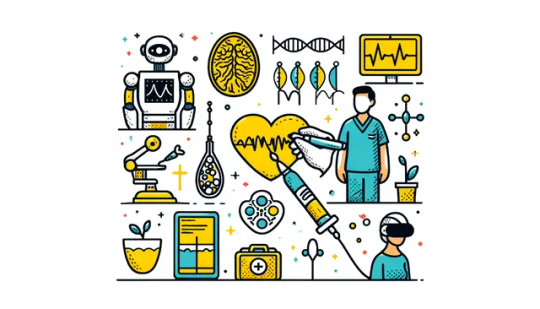
Generative AI in Medical Imaging revolutionizes healthcare practices by streamlining various processes. In diagnostics, Generative AI enhances the accuracy of disease identification through detailed image analysis, leading to quicker treatment decisions and improved patient outcomes.
Moreover, this technology facilitates personalized treatment plans tailored to individual patients based on comprehensive imaging data. Beyond diagnostics, Generative AI assists in drug discovery by simulating molecular structures, accelerating research efforts to develop new treatments. Its applications extend to improving operational efficiency in healthcare settings, optimizing resource allocation, and workflow management.
By integrating Generative AI into healthcare systems, providers can enhance patient care, drive innovation, and pave the way for transformative advancements in medical practices.
For more in-depth insights on the transformative applications of Generative AI in healthcare, explore:
#generative ai#healthcare#generative ai in healthcare#medical imaging#medical technology#future of healthcare#technology#technologies#healthcare technology
4 notes
·
View notes
Text
Inteligência Artificial - Cooperação entre NVIDIA e Microsoft

A Microsoft e a NVIDIA anunciaram integrações importantes no campo da Inteligência Artificial generativa para empresas em todo o mundo. Saiba mais em: https://news.microsoft.com/2024/03/18/microsoft-and-nvidia-announce-major-integrations-to-accelerate-generative-ai-for-enterprises-everywhere/
______
Direitos de imagem: © Microsoft (via https://news.microsoft.com/)
#MSFT#Microsoft#NVDA#NVIDIA#IA#AI#MicrosoftAzure#Azure#Chip#SuperChip#GraceBlackwell#Omniverse#Copilot#AzureAI#Empresas#Business#enterprise#developer#healthcare#digitalization#europe#world#technology#future#futurenow
2 notes
·
View notes
Text
Unleashing Gen AI: A Revolution in the Audio-Visual Landscape
Artificial Intelligence (AI) has consistently pushed the boundaries of what is possible in various industries, but now, we stand at the brink of a transformative leap: Generative AI, or Gen AI. Gen AI promises to reshape the audio-visual space in profound ways, and its impact extends to a plethora of industries. In this blog, we will delve into the essence of Gen AI and explore how it can bring about a sea change in numerous sectors.
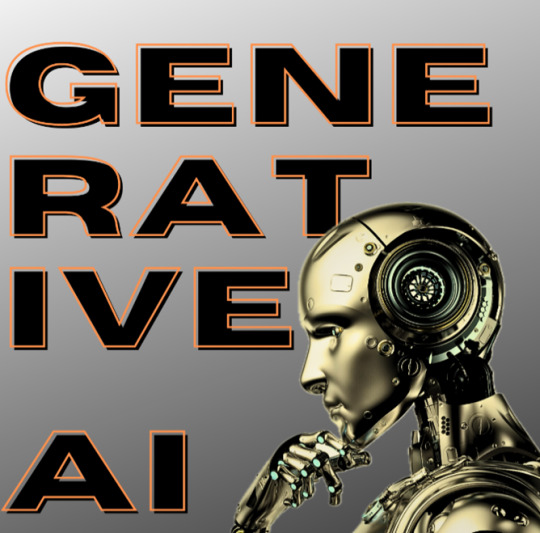
Decoding Generative AI (Gen AI)
Generative AI is the frontier of AI where machines are capable of creating content that is remarkably human-like. Harnessing neural networks, particularly Recurrent Neural Networks (RNNs) and Generative Adversarial Networks (GANs), Gen AI can generate content that is not just contextually accurate but also creatively ingenious.
The Mechanics of Gen AI
Gen AI operates by dissecting and imitating patterns, styles, and structures from colossal datasets. These learned insights then fuel the creation of content, whether it be music, videos, images, or even deepfake simulations. The realm of audio-visual content is undergoing a monumental transformation courtesy of Gen AI.
Revolutionizing the Audio-Visual Realm
The influence of Generative AI in the audio-visual sphere is profound, impacting several dimensions of content creation and consumption:
1. Musical Masterpieces:
Gen AI algorithms have unlocked the potential to compose music that rivals the creations of human composers. They can effortlessly dabble in diverse musical genres, offering a treasure trove of opportunities for musicians, film score composers, and the gaming industry. Automated music composition opens the doors to boundless creative possibilities.
2. Cinematic Magic:
In the world of film production, Gen AI can conjure up realistic animations, special effects, and entirely synthetic characters. It simplifies video editing, making it more efficient and cost-effective. Content creators, filmmakers, and advertisers are poised to benefit significantly from these capabilities.
3. Artistic Expression:
Gen AI is the artist's secret tool, generating lifelike images and artworks. It can transform rudimentary sketches into professional-grade illustrations and graphics. Industries like fashion, advertising, and graphic design are harnessing this power to streamline their creative processes.
4. Immersive Reality:
Gen AI plays a pivotal role in crafting immersive experiences in virtual and augmented reality. It crafts realistic 3D models, environments, and textures, elevating the quality of VR and AR applications. This technological marvel has applications in gaming, architecture, education, and beyond.
Industries Set to Reap the Rewards
The versatile applications of Generative AI are a boon to numerous sectors:
1. Entertainment Industry:
Entertainment stands as a vanguard in adopting Gen AI. Film production, music composition, video game development, and theme park attractions are embracing Gen AI to elevate their offerings.
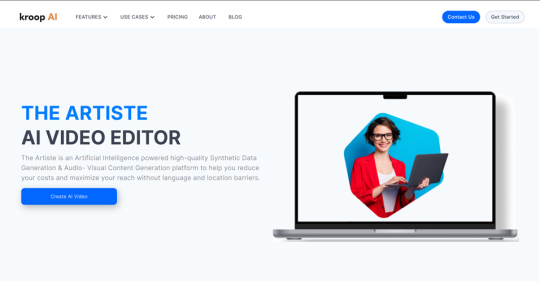
2. Marketing and Advertising:
Gen AI streamlines content creation for marketing campaigns. It generates ad copies, designs visual materials, and crafts personalized content, thereby saving time and delivering more engaging and relevant messages.
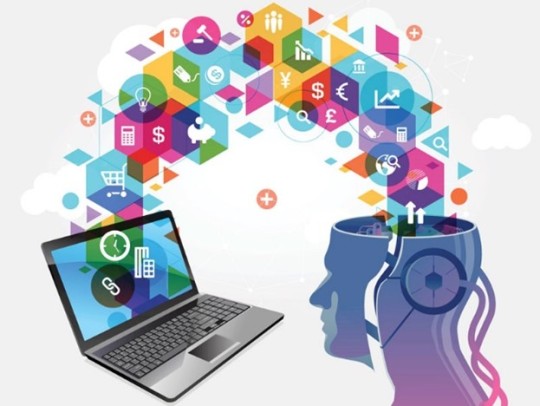
3. Healthcare and Medical Imaging:
In the realm of healthcare, Gen AI enhances medical imaging, aids in early disease detection, and generates 3D models for surgical planning and training.

4. Education:
Gen AI facilitates the creation of interactive learning materials, custom tutoring content, and immersive language learning experiences with its natural-sounding speech synthesis.

5. Design and Architecture:
Architects and designers benefit from Gen AI by generating detailed blueprints, 3D models, and interior design concepts based on precise user specifications.

The Future of Gen AI
The journey of Generative AI is far from over, and the future holds promise for even more groundbreaking innovations. However, it is imperative to navigate the ethical and societal implications thoughtfully. Concerns related to misuse, privacy, and authenticity should be addressed, and the responsible development and application of Gen AI must be prioritized.
In conclusion, Generative AI is on the cusp of redefining the audio-visual space, promising an abundance of creative and pragmatic solutions across diverse industries. Embracing and responsibly harnessing the power of Gen AI is the key to ushering these industries into a new era of ingenuity and innovation.
#artificial intelligence#technology#generative ai#audiovisual#future#startup#healthcare#education#architecture#ai#design#entertainment
5 notes
·
View notes
Text
Discover the Secrets to Navigating and Maximizing Your Tech Gadgets
Introduction
In today’s fast-paced digital world, technology plays a crucial role in our daily lives. From smartphones and laptops to smartwatches and tablets, tech gadgets have become an essential part of how we communicate, work, and entertain ourselves. However, many people struggle to fully unlock the potential of their devices, leading to frustration and underutilization. In this article,…
#advancements in artificial intelligence#cybersecurity best practices#emerging tech innovations#future of blockchain technology#guide to cloud computing#how to choose tech solutions for businesses#how to use new tech gadgets#impact of technology on business#Latest technology trends 2024#reviews of the latest tech products#tech tips and tutorials.#technology for smart homes#technology in healthcare#top technology startups#trends in mobile technology
0 notes
Text
Why I Believe AlphaFold 3 is a Powerful Tool for the Future of Healthcare
Insights on a groundbreaking artificial intelligence tool for health sciences research
Dear science and technology readers,
Thanks for subscribing to Health Science Research By Dr Mike Broadly, where I curate important public health content.
A few months ago, I wrote about AlphaFold 3, a groundbreaking AI tool that helps scientists understand protein structures, which are essential for…
#academic research#AI in healthcare#alphafold#AlphaFold 3#AlphaFold 3 represents a major leap in biological understanding#AlphaFold 3 to model proteins#AlphaFold Protein Structure Database#AlphaFold Server#Artificial Intelligence#Bioinformatics#biotechnology#Democratizing Science:#Drug discovery#future of artificial intelligence#future of science#future of technology#health#health science resarch#Health sciences research#Insights from Dr Michael Broadly#Isomorphic Labs#life lessons#Machine learning in medicine#Personalized medicine#Precision Predictions#protein resarch#Protein structure prediction#Real-World Applications#research#science
1 note
·
View note
Text
What Is the Future of Robotics in Everyday Life?
As technology continues to evolve at a rapid pace, many are asking, what is the future of robotics in everyday life? From automated vacuum cleaners to advanced AI assistants, robotics is steadily becoming an integral part of our daily routines. The blending of artificial intelligence with mechanical engineering is opening doors to possibilities that seemed like science fiction just a decade…
#Agriculture#AI#AI Assistants#AI future#AI healthcare#AI integration#AI Robots#artificial intelligence#automation#autonomous vehicles#Cobots#Collaborative Robots#Computer Vision#Domestic Robots#Drone Delivery#drones#education#environmental monitoring#ethics#everyday life#Exoskeletons#future tech#Future Technology#Healthcare#home automation#home security#Industrial Robots#Industry 4.0#job displacement#machine learning
1 note
·
View note
Text
AI Revolution: 350,000 Protein Structures and Beyond

The Evolution of AI in Scientific Research
Historical Context: Early Uses of AI in Research
The journey of Artificial Intelligence in scientific research began with simple computational models and algorithms designed to solve specific problems. In the 1950s and 1960s, AI was primarily used for basic data analysis and pattern recognition. Early AI applications in research were limited by the time's computational power and data availability. However, these foundational efforts laid the groundwork for more sophisticated AI developments.
AI in Medicine
AI in Drug Discovery and Development
AI is transforming the pharmaceutical industry by accelerating drug discovery and development. Traditional drug discovery is a time-consuming and expensive endeavor, often taking over a decade and billions of dollars to bring a new drug to market. AI algorithms, however, can analyze vast datasets to identify potential drug candidates much faster and at a fraction of the cost.
Explanation of AI Algorithms Used in Identifying Potential Drug Candidates
AI drug discovery algorithms typically employ machine learning, deep Learning, and natural language processing techniques. These algorithms can analyze chemical structures, biological data, and scientific literature to predict which compounds will likely be effective against specific diseases. By modeling complex biochemical interactions, AI can identify promising drug candidates that might have been overlooked through traditional methods.
Case Studies
BenevolentAI
This company uses AI to mine scientific literature and biomedical data to discover new drug candidates.BenevolentAI's platform has identified several potential treatments for diseases such as ALS and COVID-19, demonstrating the efficiency of AI in accelerating drug discovery.
Atomwise
Atomwise utilizes deep learning algorithms to predict the binding affinity of small molecules to protein targets. Their AI-driven approach has led to the discovery of promising drug candidates for diseases like Ebola and multiple sclerosis.
Impact on Reducing Time and Costs in Drug Development
AI significantly reduces the time and cost associated with drug development. By automating the analysis of vast datasets, AI can identify potential drug candidates in months rather than years. Additionally, AI can optimize the design of clinical trials, improving their efficiency and success rates. As a result, AI-driven drug discovery is poised to revolutionize the pharmaceutical industry, bringing new treatments to market faster and more cost-effectively than ever before.
AI in Personalized Medicine
AI Applications in Interpreting Medical Images
AI is revolutionizing medical imaging by providing tools to analyze medical images with high accuracy and speed. Deep learning algorithms, particularly convolutional neural networks (CNNs), detect abnormalities in medical images, such as tumors in MRI scans or fractures in X-rays.
How AI Helps Tailor Treatments to Individual Patients
Personalized medicine aims to tailor medical treatments to each patient's individual characteristics. AI plays a crucial role in this field by analyzing genetic, clinical, and lifestyle data to develop personalized treatment plans. Machine learning algorithms can identify patterns and correlations in patient data, enabling healthcare providers to predict how patients will respond to different treatments.
Examples of AI-driven personalized Treatment Plans (e.g., IBM Watson for Oncology)
IBM Watson for Oncology: This AI system analyzes patient data and medical literature to provide oncologists with evidence-based treatment recommendations. By considering the genetic profile and medical history of each patient,Watson helps oncologists develop personalized cancer treatment plans.
Benefits and Challenges of Implementing AI in Personalized Medicine:The benefits of AI in personalized medicine include improved treatment outcomes, reduced side effects, and more efficient use of healthcare resources. However, challenges remain, such as ensuring data privacy, managing the complexity of AI models, and addressing potential biases in AI algorithms. Overcoming these challenges is essential to fully realizing the potential of AI in personalized medicine.
Benefits and Challenges of Implementing AI in Personalized Medicine
The benefits of AI in personalized medicine include improved treatment outcomes, reduced side effects, and more efficient use of healthcare resources. However, challenges remain, such as ensuring data privacy, managing the complexity of AI models, and addressing potential biases in AI algorithms. Overcoming these challenges is essential to fully realizing the potential of AI in personalized medicine.
AI in Medical Imaging and Diagnostics
AI Applications in Interpreting Medical Images
AI is revolutionizing medical imaging by providing tools to analyze medical images with high accuracy and speed. Deep learning algorithms, particularly convolutional neural networks (CNNs), detect abnormalities in medical images, such as tumors in MRI scans or fractures in X-rays
Examples of AI Tools in Diagnostics (e.g., Google's DeepMind, Zebra Medical Vision)
Google's DeepMind: DeepMind's AI systems have been used to accurately interpret retinal scans and diagnose eye diseases. Their algorithms can detect conditions like diabetic retinopathy and age-related macular degeneration early, improving patient outcomes.
Zebra Medical Vision: This company offers AI-powered solutions for interpreting medical images across various modalities, including CT, MRI, and X-ray. Their algorithms can detect various conditions, from liver disease to cardiovascular abnormalities.
The Future of AI in Improving Diagnostic Accuracy and Speed
AI has the potential to significantly improve diagnostic accuracy and speed, leading to earlier detection of diseases and better patient outcomes. As AI technology advances, it will become an integral part of medical diagnostics, assisting healthcare professionals in making more accurate and timely decisions.
AI in Climate Science
AI for Climate Modeling and Prediction
Artificial Intelligence (AI) has significantly enhanced the precision and reliability of climate models. Traditional climate models rely on complex mathematical equations to simulate the interactions between the atmosphere, oceans, land surface, and ice. However, these models often need help with climate systems' sheer complexity and scale.
AI-driven models can process data from numerous sources, including satellite imagery, weather stations, and historical climate data, to improve short-term weather forecasts and long-term climate projections. For instance, AI algorithms can detect subtle patterns in climate data that might be overlooked by conventional models, leading to more accurate predictions of extreme weather events and climate change impacts.
Examples of AI Projects in Climate Science
Climate Change AI: This initiative brings together researchers and practitioners from AI and climate science to harness AI for climate action. They work on projects that apply AI to improve climate models, optimize renewable energy systems, and develop climate mitigation strategies. For example, AI has been used to enhance the resolution of climate models, providing more detailed and accurate forecasts.
IBM's Green Horizon Project: IBM uses AI to predict air pollution levels and track greenhouse gas emissions. The system employs machine learning algorithms to analyze environmental data and forecast pollution patterns, helping cities manage air quality more effectively.
Impact of AI on Understanding and Mitigating Climate Change
AI's ability to analyze large datasets and identify trends has profound implications for understanding and mitigating climate change. By providing more accurate climate models, AI helps scientists better understand the potential impacts of climate change, including sea level rise, temperature increases, and changes in precipitation patterns. This knowledge is crucial for developing effective mitigation and adaptation strategies. AI also plays a critical role in optimizing renewable energy systems. For instance, AI algorithms can predict solar and wind power output based on weather forecasts, helping to integrate these renewable sources into the power grid more efficiently. This optimization reduces reliance on fossil fuels and helps lower greenhouse gas emissions.
Use of AI in Tracking Environmental Changes
AI technologies are increasingly used to monitor environmental changes, such as deforestation, pollution, and wildlife populations. These applications involve analyzing data from satellites, drones, and sensors to track changes in the environment in real time.
Wildbook
Wildbook uses AI and computer vision to track and monitor wildlife populations. By analyzing photos and videos uploaded by researchers and the public, Wildbook identifies individual animals and tracks their movements and behaviors.This data is invaluable for conservation efforts, helping to protect endangered species and their habitats.
Global Forest Watch
This platform uses AI to monitor deforestation and forest degradation worldwide. AI algorithms process satellite imagery to detect changes in forest cover, providing timely alerts to conservationists and policymakers. This real-time monitoring helps prevent illegal logging and supports reforestation efforts .
The Role of AI in Promoting Sustainability and Conservation Efforts
AI promotes sustainability by enabling more efficient resource management and supporting conservation initiatives. For example, AI can optimize water usage in agriculture by analyzing soil moisture data and weather forecasts to recommend precise irrigation schedules. This reduces water waste and enhances crop yields. In conservation, AI helps monitor ecosystems and detect threats to biodiversity. AI-powered drones and camera traps can automatically identify and count species, providing valuable data for conservationists. These technologies enable more effective management of protected areas and support efforts to restore endangered species populations.
AI in Materials Engineering
Explanation of How AI Accelerates the Discovery of New Materials
The discovery of new materials traditionally involves trial and error, which can be time-consuming and expensive. AI accelerates this process by predicting the properties of potential materials before they are synthesized. Machine learning models are trained on vast datasets of known materials and their properties, allowing them to predict the characteristics of new, hypothetical materials.
Materials Project
This initiative uses AI to predict the properties of thousands of materials. Researchers can use the platform to explore new materials for energy storage, electronics, and other applications. The Materials Project has led to the discovery of new battery materials and catalysts, significantly speeding up the research process.
Citrine Informatics
Citrine uses AI to analyze data on materials and predict optimal compositions for specific applications. Their platform has been used to develop new alloys, polymers, and ceramics with enhanced properties, such as increased strength or conductivity.
Potential Breakthroughs Enabled by AI in Materials Science
AI-driven materials research has the potential to revolutionize various industries. For instance, AI could lead to the discovery of new materials for more efficient solar panels, lightweight and durable materials for aerospace, and high-capacity batteries for electric vehicles. These breakthroughs would have significant economic and environmental benefits, driving innovation and sustainability.
AI in Predicting Material Properties
How AI Models Predict Properties and Behaviors of Materials
AI models use data from existing materials to predict the properties and behaviors of new materials. These models can simulate how a material will respond to different conditions, such as temperature, pressure, and chemical environment. This predictive capability allows researchers to identify promising materials without extensive laboratory testing.
Polymers and Alloys
AI models have been used to predict the mechanical properties of polymers and alloys, such as tensile strength, elasticity, and thermal stability. This helps design materials that meet specific performance criteria for industrial applications
Impact on Developing Advanced Materials for Various Industries
AI's predictive capabilities accelerate the development of advanced materials, reducing the time and cost associated with traditional experimental methods. In electronics, aerospace, and energy industries, AI-driven materials discovery leads to the development of components with superior performance and durability. This innovation drives progress in technology and manufacturing, supporting economic growth and environmental sustainability.
Tools and Technologies Driving AI in Research
Detailed Overview of AlphaFold and Its Significance
AlphaFold developed by DeepMind, is an AI system with remarkable breakthroughs in predicting protein structures. Accurately predicting protein structures is vital because the shape of a protein determines its function, and misfolded proteins can lead to diseases such as Alzheimer's and Parkinson's. Defining a protein's structure traditionally required techniques like X-ray crystallography and cryo-electron microscopy, which are both time-consuming and expensive.
How AlphaFold Has Revolutionized Protein Structure Prediction
In 2020, AlphaFold achieved a significant milestone by outperforming other methods for the Critical Assessment of Protein Structure Prediction (CASP) competition. AlphaFold's predictions were comparable to experimental results, achieving a median Global Distance Test (GDT) score of 92.4 out of 100 for the hardest targets in CASP14. This level of accuracy had never been achieved before by computational methods.
The AI system uses neural networks trained on a vast dataset of known protein structures and sequences. It can predict the 3D shapes of proteins based solely on their amino acid sequences, which traditionally took months or years but are now reduced to days.
AlphaFold's success has had a profound impact on various fields:
Drug Discovery
With accurate protein structures, drug developers can design more effective drugs targeting specific proteins. This could significantly reduce the time and cost of bringing new medicines to market.
Biology and Medicine
Understanding protein structures helps researchers decipher their functions, interactions, and roles in diseases. This knowledge is crucial for developing new treatments and understanding biological processes.
Biotechnology
Industries relying on enzymes and other proteins can use AlphaFold to optimize and engineer proteins for specific applications, enhancing efficiency and innovation.
AI Platforms and Frameworks
Several AI platforms and frameworks are widely used in scientific research to facilitate the development and deployment of AI models. Key platforms include:
TensorFlow
Google developed this open-source machine learning framework for various AI applications, including research.
PyTorch
Developed by Facebook's AI Research lab, PyTorch is known for its flexibility and ease of use. It has gained immense popularity among researchers, with over 100,000 stars on GitHub as of 2023.
Keras
A high-level neural networks API running on top of TensorFlow, Keras provides a simplified interface for building and training models. It is used extensively in academic research and industry .
Examples of How These Platforms Facilitate Scientific Discovery
TensorFlow
TensorFlow has been used in projects ranging from image recognition to natural language processing. For instance, it has been used to develop AI models for detecting diabetic retinopathy from retinal images with an accuracy comparable to that of human specialists.
PyTorch
PyTorch's dynamic computational graph makes it ideal for research. Researchers have used PyTorch to create models for climate prediction and medical image analysis, leading to significant advancements in these fields.
Keras
Keras simplifies the process of designing and testing deep learning models, making them accessible to both beginners and experts. It has been used in applications such as genomics and neuroscience, where rapid prototyping and iteration are crucial (Harvard)
The Role of Open-Source AI Tools in Accelerating Innovation
Open-source AI tools democratize access to advanced technologies, enabling researchers worldwide to collaborate and innovate. These tools provide a shared foundation for developing new algorithms, sharing datasets, and building upon each other's work. The collaborative nature of open-source projects accelerates innovation, leading to rapid advancements in AI research and its applications across various scientific disciplines.
Real-Life Examples of AI in Scientific Discovery
AlphaFold's Breakthrough in Protein Folding
In 2020, DeepMind's AlphaFold made a groundbreaking advancement by accurately predicting protein structures. This achievement has far-reaching implications for drug discovery and understanding of diseases. The system has been used to indicate the structure of over 350,000 proteins across 20 different organisms, helping researchers understand protein functions and interactions at an unprecedented scale.
AI in COVID-19 Research
During the COVID-19 pandemic, AI played a crucial role in accelerating vaccine development and drug repurposing. Companies like Moderna used AI to speed up the design of mRNA sequences for their vaccines, significantly reducing development time from years to months. AI algorithms also helped identify existing drugs that could be repurposed to treat COVID-19, leading to faster clinical trials and treatments. For example, AI identified Baricitinib as a potential treatment that was later approved by the FDA.
IBM Watson in Oncology
IBM Watson for Oncology uses AI to analyze large medical literature and patient data to provide personalized cancer treatment recommendations. This tool has been deployed in various hospitals worldwide, improving treatment accuracy and outcomes.
AI in Climate Science: Project Climate Change AI
The Climate Change AI initiative leverages AI to enhance climate modeling, predict extreme weather events, and optimize renewable energy systems. AI models have been used to indicate the impact of climate change on agricultural yields, helping farmers adapt to changing conditions. For instance, AI-driven models have improved the accuracy of weather forecasts, aiding in disaster preparedness and response. These advancements help mitigate the impacts of climate change and promote sustainability.
Citrine Informatics in Materials Science
Citrine Informatics uses AI to accelerate the discovery and development of new materials. Their platform combines machine learning with materials science data to predict material properties and optimize formulations, leading to faster innovation in industries such as aerospace and electronics. The company's AI-driven approach has resulted in new materials with enhanced performance characteristics, reducing the time and cost of traditional materials research. For example, Citrine's platform has helped develop new alloys with improved strength and durability for aerospace applications.
Ready to Transform Your Business with Cutting-Edge AI?
At Coditude, we are committed to driving innovation and helping businesses leverage the power of Artificial Intelligence to achieve extraordinary results. Our expertise spans various fields, from accelerating drug discovery to optimizing renewable energy systems and revolutionizing materials science.
Are you ready to harness AI's transformative potential for your organization? Whether you're looking to enhance your research capabilities, streamline operations, or develop groundbreaking solutions, Coditude guides you every step of the way.
#artificial intelligence#machine learning algorithms#generative AI#AI models#future of AI#power of AI#AI technology#machine learning applications#AI in drug discovery#AI in scientific research#AI in materials engineering#AI in healthcare#AI in climate science#Coditude
0 notes
Text
#data analytics#healthcare#diagnosis#treatment#future#tech help#health tech#google analytics#future trends#technology#branding#follow#programming#machine learning#artificial intelligence#euro 2024#instagood#explore#coding
0 notes
Text
The Rise of Augmented Reality in Everyday Life
Augmented Reality (AR) has quickly evolved from a niche technology into a mainstream tool, impacting various aspects of daily life. By overlaying digital elements onto the real world, AR enhances our physical surroundings with virtual information, offering new ways to interact with the world around us. While AR’s influence was once limited to specialized sectors like gaming and entertainment,…
#AR education#AR in daily life#AR in education#AR in healthcare#AR in retail#AR technology#augmented reality#augmented reality applications#everyday AR#future of AR
0 notes
Link
#market research future#patient engagement solutions#patient engagement technology#patient engagement companies#patient engagement healthcare
0 notes
Text
Unlocking the Future: How Blockchain and AI Are Teaming Up for Innovative Solutions


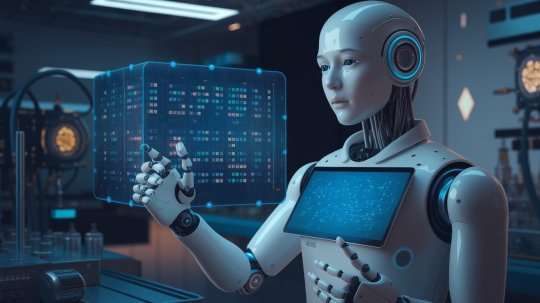
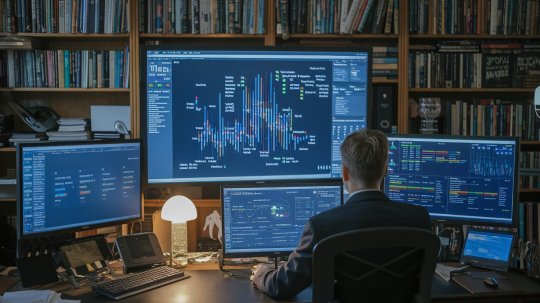


#Blockchain#AI#Artificial Intelligence#blockchain and AI#blockchain in finance#AI in healthcare#blockchain gaming#NFTs#supply chain#blockchain security#AI data analysis#blockchain technology#AI applications#blockchain in education#blockchain in gaming#AI in business#blockchain energy use#AI environmental impact#blockchain transparency#AI learning#blockchain finance innovation#blockchain and healthcare#AI in jobs#blockchain future#AI-powered#blockchain ledger#AI machine learning#AI personalization#blockchain secure transactions#AI fraud detection
0 notes
Text
Exploring Artificial Intelligence: Top Real-World Applications
Discover the top real-world applications of AI across various industries. See how AI is making a difference in daily life.
#Artificial Intelligence#AI Applications#AI in Industries#AI Trends#Future of AI#AI in Business#AI in Healthcare#Innovative AI#AI Technology#AI in Daily Life
0 notes
Video
youtube
The Rise of Telemedicine
#youtube#telemedicine healthcare digital technology convenience accessibility future doctor patient advice
0 notes
Text
Historic Milestone: First Pediatric Surgery with Robots in the UK
In a groundbreaking leap for pediatric medicine, the United Kingdom has reached a remarkable milestone by successfully conducting its inaugural robotic-assisted surgery on a child. This momentous procedure unfolded at Southampton Children’s Hospital, marking the dawn of a new era of meticulous and compassionate medical interventions tailored to younger patients.
The Versius Surgical Robotic…
#Cambridge Innovation#Childrens Health#Dr. Ewan Brownlee#Future Of Surgery#Health#Health Tech#Healthcare Advancements#Medical Innovation#Medical Milestones#Medical Technology#Pediatric Care#Pediatric Surgery#Precision Medicine#Robot Assisted Surgery#Robotic Surgery#Robotic Technology#Robotics In Medicine#Southampton Hospital#Surgical Breakthrough#Surgical Precision#Surgical Robotics#UK#Versius Robotics
0 notes